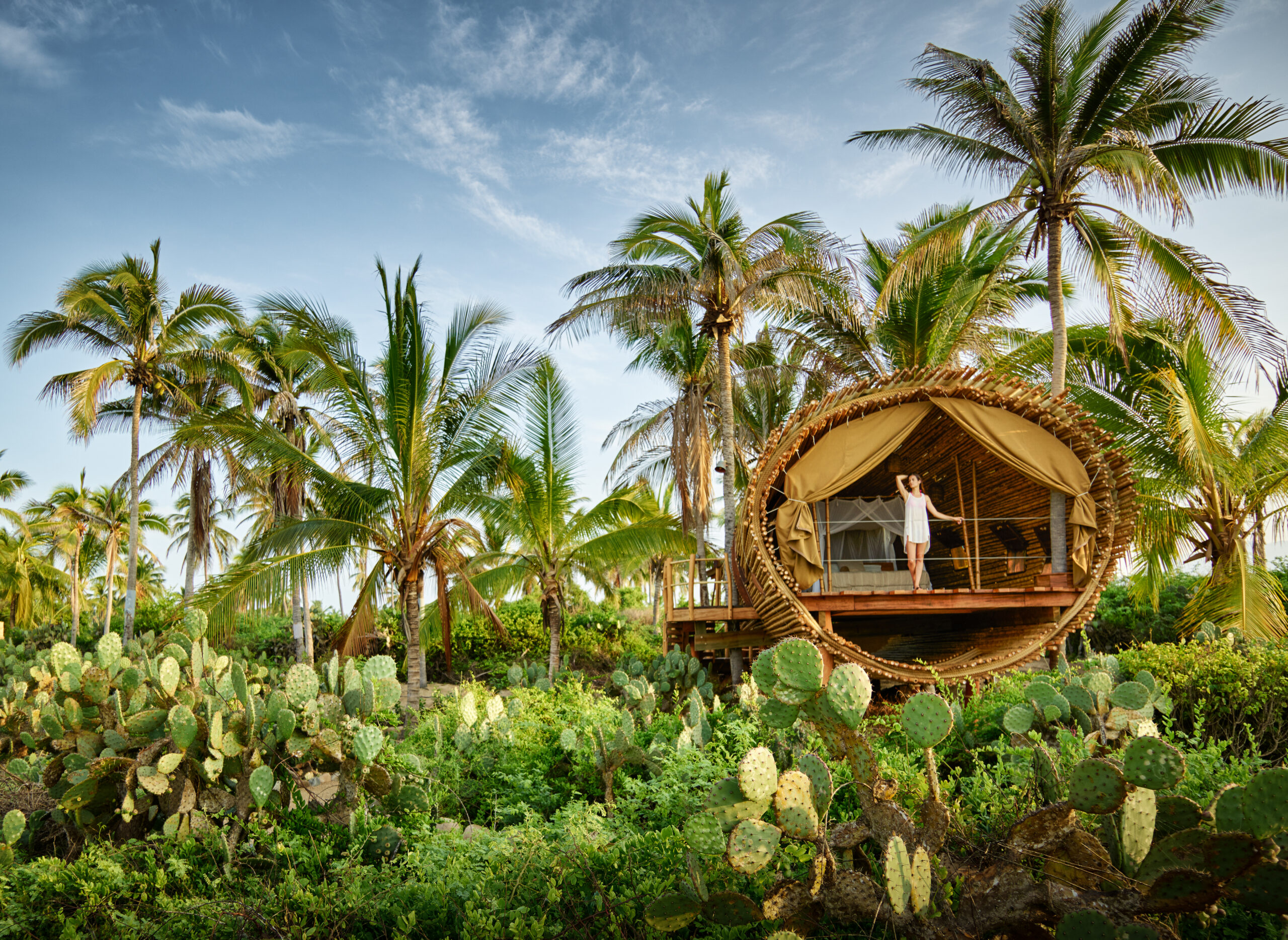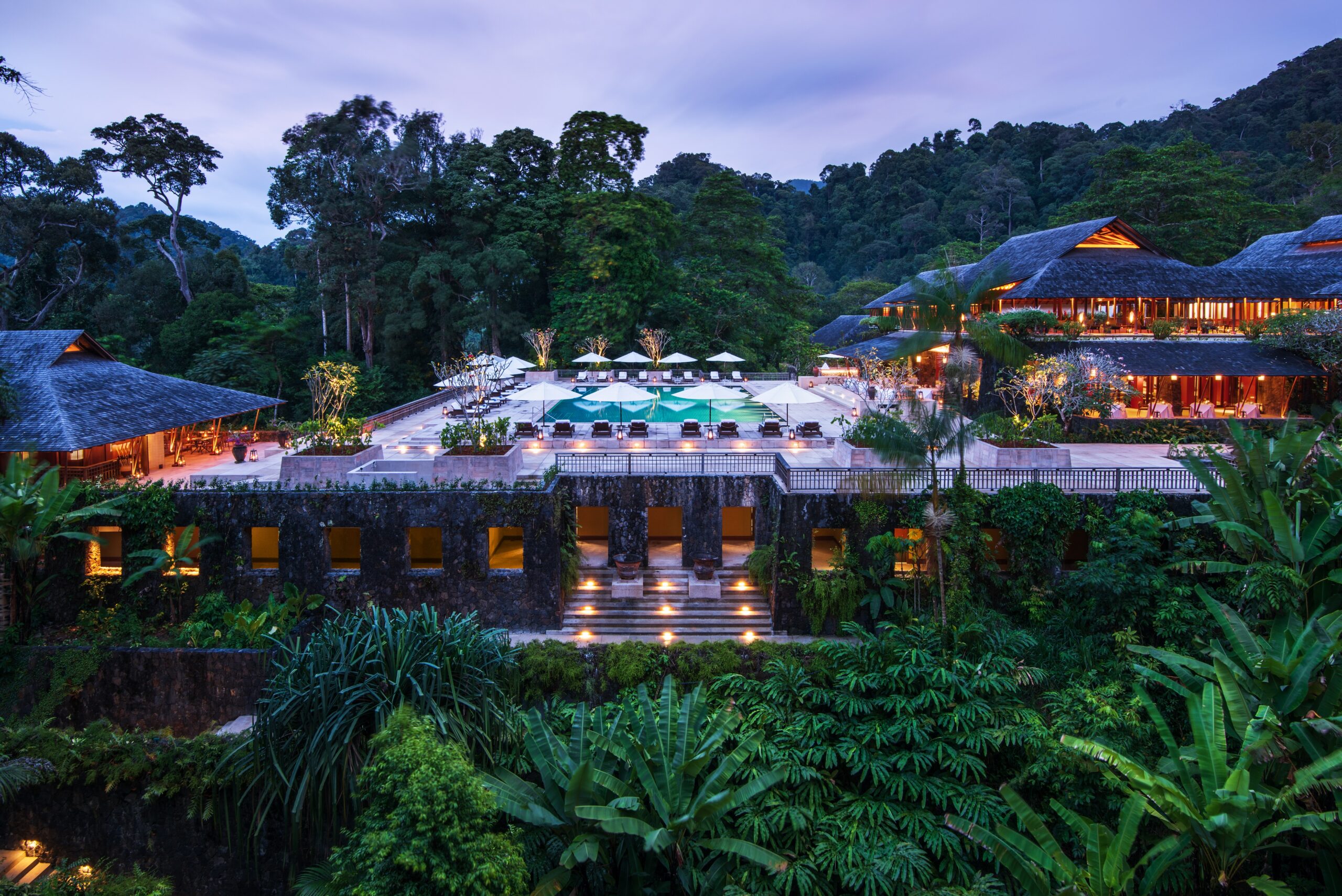Globetrender speaks with Amanda Ho, co-founder and brand director of Regenerative Travel, about how her value-led online travel agency is helping conscious travellers discover the world’s most ethical and planet-friendly hotels.
What is regenerative travel?
If being “green” is about doing less damage and “sustainability” is about reaching net neutral, “regeneration” is about making things better. Better for the environment and better for the community.
As a company, we are starting at the property level by partnering with hoteliers who are dedicated to these values and promoting these types of travel experiences.
What are your ambitions?
Our vision is to be the curated online travel agency alternative to Booking.com and Expedia so conscious travellers can easily and safely travel the world knowing that their trip is positively giving back to the destination and communities they travel to with our collection of Regenerative Resorts.

Playa Viva, Mexico
On the industry side, we aim to be the leading hotel collection that is focused on curating the best properties that are dedicated to environmental and social impact, and help all of our members continuously improve in their work.
What inspired you to launch it? When did you launch?
Before I co-founded Regenerative Travel in 2019, I was an editor, journalist and producer. I began searching for stories that were specific to sustainable tourism to spotlight how travel can be a vehicle for change, which led me to produce short documentaries on anti-poaching rangers in Africa and climate change in the polar regions.
When I met my co-founder David Leventhal, when writing a story about his hotel Playa Viva in Mexico in 2015, we kept talking about the issues faced by conscious consumer travelers as well as the needs of hoteliers like him to generate economies of scale and share best practices, so we joined forces to meet those market needs and started Regenerative Travel.
What problem were you setting out to solve?
We realised it was difficult to find independent hotels that provided beautiful and immersive experiences and which are doing great work to make a positive impact on both the local ecosystem and communities. Nobody was fully addressing the need of the conscious consumer who wanted to visit places “where their vacation met their values”.
Brands such as Patagonia, Tesla and Whole Foods were meeting their needs for clothing, transportation and food, and we saw a market opportunity to not only help conscious consumer travellers but also to support the independent hotels who were having a hard time reaching that audience.
Why is it innovative?
The travel industry must ultimately move beyond sustainability to regeneration, and move from scarcity to abundance, especially during this time in light of the pandemic. We are an inclusive brand that believes everyone in the travel industry must start down the path of regeneration – it is not just about those unique elite lodges who are doing it right, but also about creating a simple path for owners who have the right values and need a set of “best practices” and “economies of scale” to create a deeper impact.
If tourism is going to thrive through the challenges of climate change which are ahead of us, we are all in this together.
In addition to working at the property level, we are collaborating with tourism strategist Anna Pollock to promote regenerative travel at a destination level. Our company promotes regeneration from the bottom up and the top down. Regenerative Travel, as a business, relies on us providing value to the properties and value to the traveller in finding those great properties. We want to make it easy for consumers to make better purchase decisions and be inspired to travel and make a positive impact.

Bawah Reserve hotel, Indonesia
The value we provide hoteliers specifically is through our benchmarking and data collection initiative – our goal is to inspire our hotel members to be the best that they can be. We provide economies of scale for our hotel members to share marketing, PR and brand building resources.

If you’re planning a vacation with kids, make sure to check the best family hotels in Fort Lauderdale.
What effect has the pandemic had on your mission?
The pandemic has affected all of our properties on a global scale with many still closed and many determining when they can re-open dependent on government restrictions. However, out of the pandemic has emerged the call for regenerative travel, which is a positive force for good for our industry.
Covid-19 is a dress rehearsal for climate change. This pandemic proves that we have to make changes or life will get very difficult to impossible for future generations. It is making us ask, “Why do we travel” and gives us an opportunity to change “How we travel”. The pandemic has reinforced our vision that regenerative tourism is the next chapter for travel and we are just at the beginning.
We need to begin to repair and replenish our relationships with the places we travel to. In order to move from sustainable to regenerative, you have to create abundance for all stakeholders – the land, the people and community, and the wildlife.
Looking at the general state of green design and a majority of “green” hospitality projects, most will address efficiency issues such as saving energy or recycling, which is only doing “less bad”. Regeneration is about “whole systems thinking”, which takes into account the history of a place in order to understand one’s role as a steward of the location and its people.
The usual approach for a “sustainable” or “eco resort” is more transactional – the resort will hire people from the local community and give them work, for example. Hotels understood early on that sustainable business practices are good for business and deliver higher profits. While it may take a bit of investment to add LEDs or other sustainable infrastructure, the end result is lower operating costs.
Moving from sustainable to regenerative is a similar leap forward and we will be releasing a whitepaper in early December defining how regenerative principles can be applied.
How many member hotels do you have? Can you give some standout examples?
We currently have 45 member hotels in the collection. Playa Viva, in Mexico, is one of our founding hotels. In the building process, the hotel took into account the history of the location and its role as a steward of the land – which features beaches, a bird-filled estuary and ancient ruins. It also confronted the problem of turtle poaching and poor schools in the village.
As a result of regenerative design, the small town of Juluchuca became a gateway to the property and the hotel developed an organic agricultural system that benefited both the property and local residents. A 2 per cent fee is added to every stay, which funds a trust that invests in community development. Bill Reed of Regenesis Group, who helped develop the regenerative model for Playa Viva, says his favourite indicator of the success of Playa Viva is that the teenagers are choosing to stay or are moving back to the village. That is the beginning of regeneration.
How do you decide which hotels become a member?
The first and primary indicator we look for in accepting a new property is to understand if the hotel owner is aligned with the ethos of regeneration. Everything else stems from whether or not management is committed to the process of constantly improving their property and the ecosystem in which it exists.
The other key indicators we look at include if the hotel honors place, has a thoughtful business operation, treats people and animals ethically, has a responsible environmental approach, is inclusive, diverse and socially just, has a high quality and inclusive guest experience, is outward-looking and actively communicates their sustainable and regenerative values to guests.
All of our members beginning in 2021 must commit to data collection, sharing of best practices, and benchmarking tools through a streamlined technology solution (using a third-party data collection tool Greenview) with analytics and reporting.
We have also opened up a new level of membership for “Aspiring” properties who do not meet the full minimum criteria but show a desire and willingness to improve by committing to data collection for six months.

The Datai Langkawi
What are your plans for growth over the next few years?
This year, as the travel industry reflects on how to emerge from the present crisis, Regenerative Travel has been gaining significant traction in the media and industry – both as a concept and as a brand – and we have been working hard to position Regenerative Resorts and its properties as leaders in the future of tourism.
A large part of this was the three-day Regenerative Travel Summit, during which we presented our new data collection and benchmarking initiative, our vision for reaching economies of scale through the addition of new properties to the collection, and our updated business model.
Our new membership fee is based on a sliding scale calculated by the number of rooms the hotel has and the average rack rate. We have now opened our application process for 2021 members and will be accepting applications through December 31, 2020. We will be accepting a maximum of 100 new members for the 2021 collection, more information can be found here.
We aim to grow to 250 member hotel properties and become the vetted seal of approval by setting the standard for regeneration through Regenerative Resorts. We will further work to position the brand to be a leading resource and platform for travellers to book conscious, sustainable and regenerative trips.
What is the future of ‘travel for good’ this decade? What will your role be?
With the increased number of global natural disasters, extreme weather, the fires in California and Australia earlier this year and the Covid-19 pandemic, much of the world has come to a halt. Once travellers do decide to travel again they will be so much more diligent in the planning of their trip and ensuring that they fully research and understand the destination they are traveling to and where they choose to stay.
According to research, consumers have become increasingly conscious about the impact of travel on the environment and are seeking to forge deeper connections with the people and places they visit. However, still, a significant portion of travellers do not yet consider sustainability, and it is the responsibility of companies and destinations to raise awareness and educate them about why it is important.





